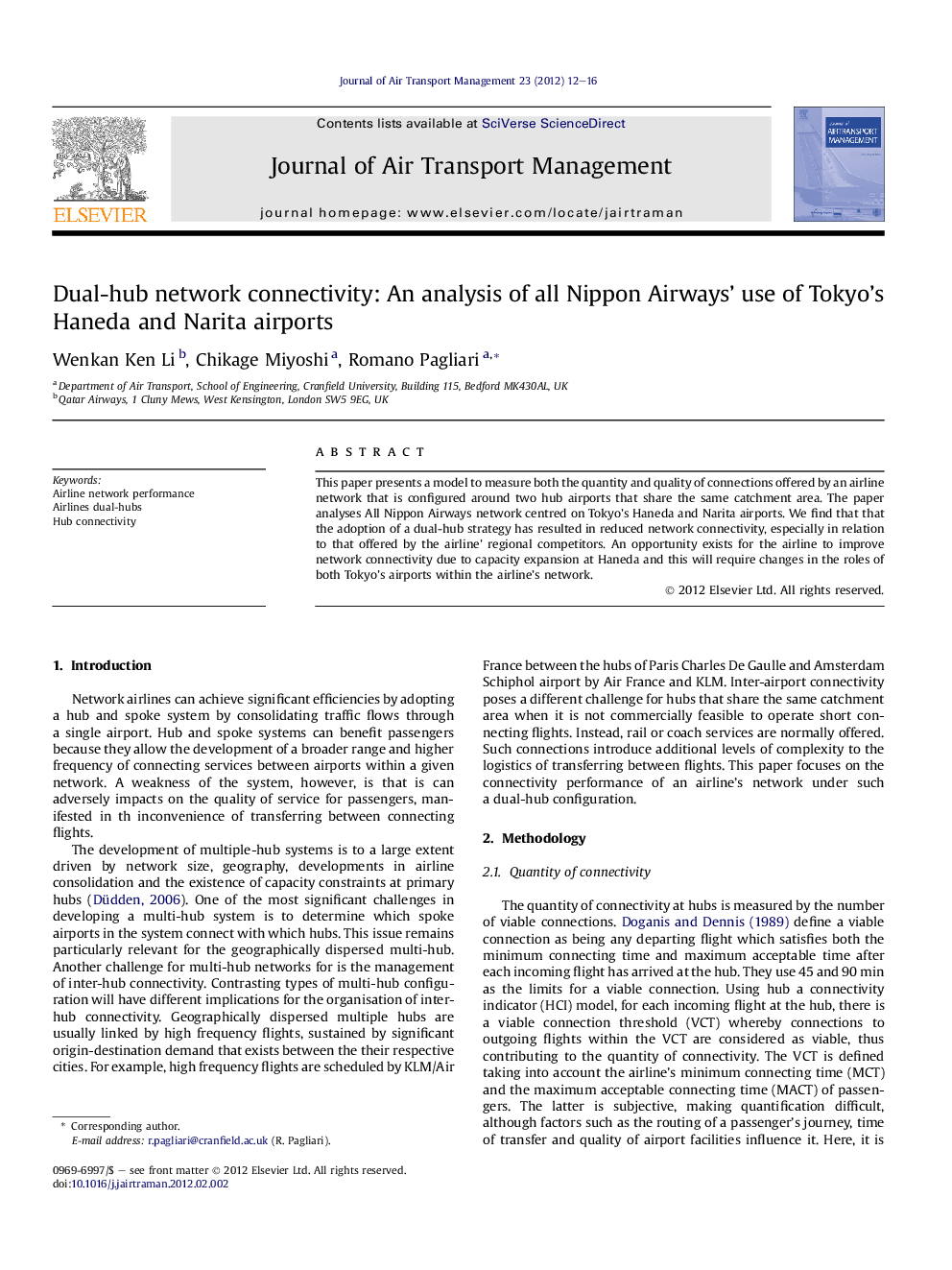| Article ID | Journal | Published Year | Pages | File Type |
|---|---|---|---|---|
| 1030922 | Journal of Air Transport Management | 2012 | 5 Pages |
This paper presents a model to measure both the quantity and quality of connections offered by an airline network that is configured around two hub airports that share the same catchment area. The paper analyses All Nippon Airways network centred on Tokyo’s Haneda and Narita airports. We find that that the adoption of a dual-hub strategy has resulted in reduced network connectivity, especially in relation to that offered by the airline’ regional competitors. An opportunity exists for the airline to improve network connectivity due to capacity expansion at Haneda and this will require changes in the roles of both Tokyo’s airports within the airline’s network.
► We present a model to measure both the quantity and quality of connections at two hub airports. ► We focus on two hub airports in the same catchment area as a case study. ► This model enables us to assess both the quality and quantity of connectivity at airports. ► The model can measure the network competitiveness of an airport or airline -- for example, market share of a specific transfer connection. ► The adoption by All Nippon Airways of a dual-hub strategy has resulted in a reduced level of overall network connectivity.
